Summary:
- The rapid flow of water through a toilet’s tank and bowl during flushing always makes some noise—but unusual or louder-than-normal sounds may indicate a problem.
- Noisy flushing can be caused by dirty or faulty valves, clogs, loose pipes, mineral build-up, and sudden changes in water pressure due to faulty plumbing. A malfunctioning float switch may also cause your toilet to run constantly between flushes.
- While it may be possible to resolve some noisy toilet issues at home, persistent or severe noise often indicates a more serious problem that may worsen over time or even lead to a plumbing emergency. It’s best to reach out to a qualified professional for help.
The bathroom should be a place where you can relax comfortably in private, not a source of frustration. Noisy flushing, sudden bangs, hissing, or constant trickling can disrupt that solitude and even interrupt your sleep if they’re bad enough! They also give everyone else in the house an awkward play-by-play each time you go to the bathroom.
While it’s normal for all toilets to produce some level of noise, a sudden change in the volume or type of sounds you hear should never be ignored. Symptoms like these almost always point to underlying issues with the toilet itself or problems further down the line.
Need help with your noisy toilet or plumbing? Try following this guide to identify the source and apply a fix. And if you still need help, contact Caccia Plumbing—we fix clogged or faulty toilets all the time, and we’re just a telephone call away!
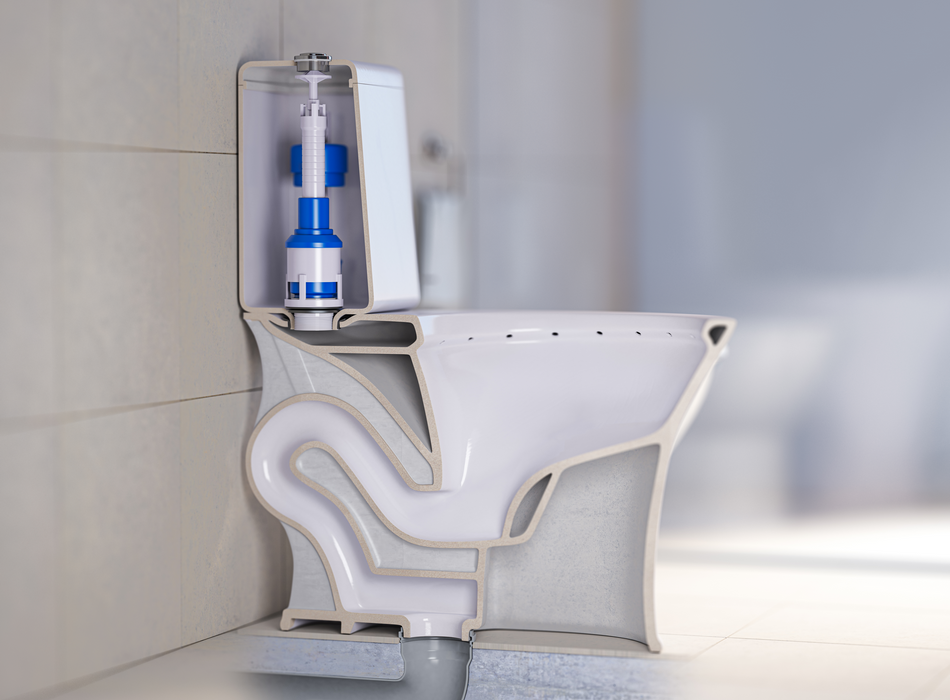
Anatomy of a Toilet
The first step in diagnosing loud toilet noises is to get to know how a toilet works. This can provide helpful clues that may help you narrow down the source of your toilet trouble.

Problems with one or more of these parts, or the plumbing connected to your toilet, can lead to loud flushing, gurgling, hissing, and other undesirable noises.
Common Causes of Toilet Noise
Some toilet components are more likely to cause loud noise than others if they break or wear out. Here are a few of the most common culprits:
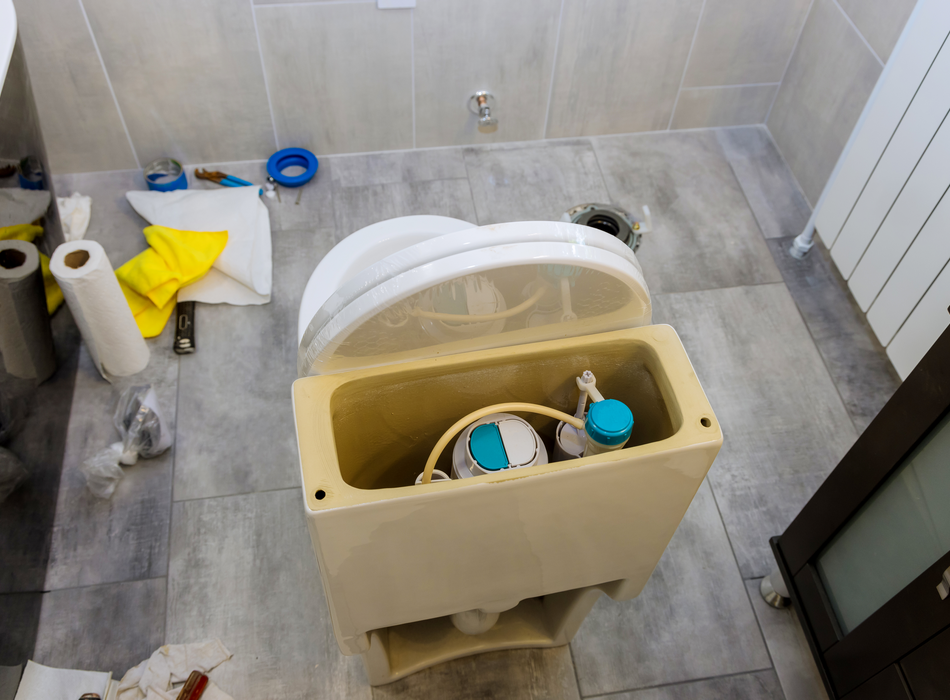
Dirty Valve
Constant exposure to water and the minerals found within it can cause fill and flush valves to become dirty or wear down over time. This is especially true if you have hard water that contains a lot of sediment. Debris often collects in or around the float or drain plug, either of which can end up stuck in place or damaged as a result.
Homeowners who struggle with this common issue often report hearing a noise that sounds like screaming or a foghorn coming from the tank. The noise may happen all the time or only intermittently depending on how dirty the valve is.
What to Try Before Calling a Plumber
It may be possible to clean the valve yourself without calling a plumber for help. Here’s what we recommend trying if you’re comfortable:
- Using the shut-off valve on the intake line, turn off the water going into the toilet.
- Remove the tank lid and locate the valves inside.
- Inspect each of the valves as closely as possible for debris or damage.
- Use a sponge or cloth to gently loosen and wipe away stuck debris.
- Allow water to flow out of the valve, flushing away the dirt.
- Reassemble the toilet and turn the shut-off valve back on.
The noise may resolve after you clear away any debris. If you notice any cracks, breaks, or worn-away portions of the interior workings, fitting a new ballcock or fill valve may help (although these are generally jobs for our professionals).
Related: The Most Common Toilet Problems
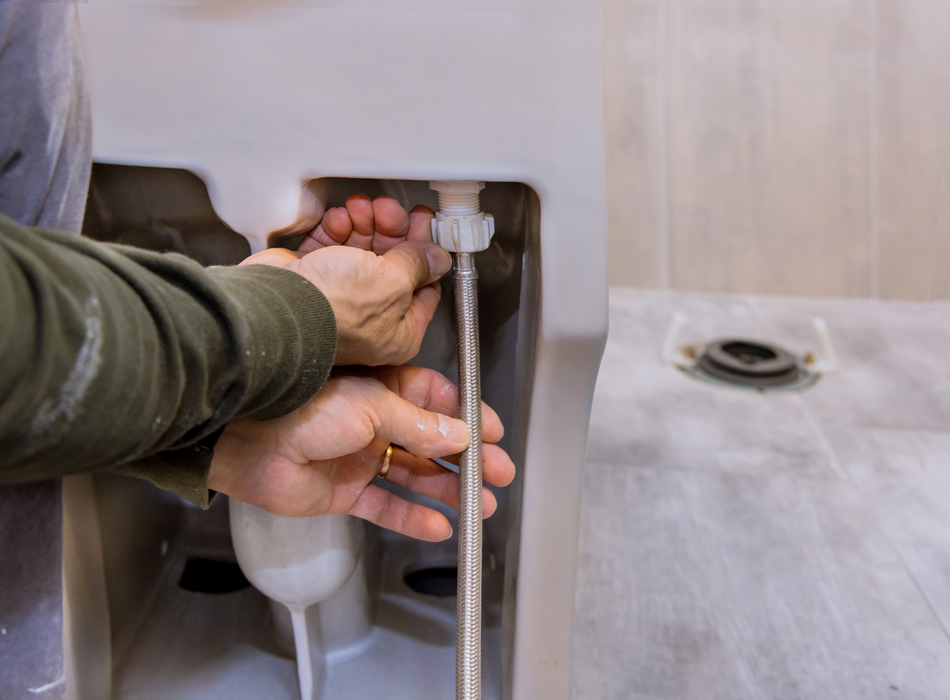
Water Hammer
Water hammer is a phenomenon that occurs within a home’s plumbing system, rather than within the toilet itself. It’s a kind of loud banging, knocking, or humming noise that typically occurs after flushing the toilet or turning off a tap. The sudden change in pressure results in a small shock wave, which echoes throughout the pipes.
Water hammer can happen to anyone, but it is more common in homes with older plumbing and in areas where water pressure in the local area is naturally high. It can damage your toilet’s fill valve or intake line over time, making noisy flushing worse.
Possible Solutions
- Replacing the fill valve may temporarily reduce the noise or even eliminate it completely. However, the problem will likely reoccur unless you address the root cause.
- Installing a water hammer arrestor on the supply line will not only stop water hammer from happening, but prevent damage to the fill valve. This is a job for our professionals, who can pinpoint the best location in your system for the device and also address any contributing factors.
Pro Tip: If you suspect water hammer, try turning off the water to the toilet. If the noise instantly disappears, it strongly indicates that the problem stems from the intake line.
Related: Avoiding Toilet Problems
Broken Float Switch
If the toilet is producing a constant trickling noise or never seems to stop filling, you may have a problem with the float switch. This mechanism is connected to the fill valve itself, which is located inside of the tank near the float.
Normally, the float rises as water enters the tank through the fill valve. After it reaches the desired height, it should trigger the switch, which halts the flow. If the switch becomes sticky or breaks entirely, the fill valve will never receive that signal to stop, causing constant overflow.
Ways to Fix It
This is usually a fairly easy problem to fix on newer toilets. Just be sure to turn the water off before you try!
- Try adjusting the float. Open the tank and locate the float. It should be connected to a vertical rod topped by a screw. Turn the screw counter-clockwise to raise the level at which it stops, or clockwise to lower the level instead.
- Replace the fill valve. If the float switch is completely broken, or you have an older toilet, it may be easier to replace the entire fill valve itself.
ProTip: Before you disassemble any parts, try gently tapping the float and/or switch with a screwdriver. Sometimes this is enough to loosen sticky debris.
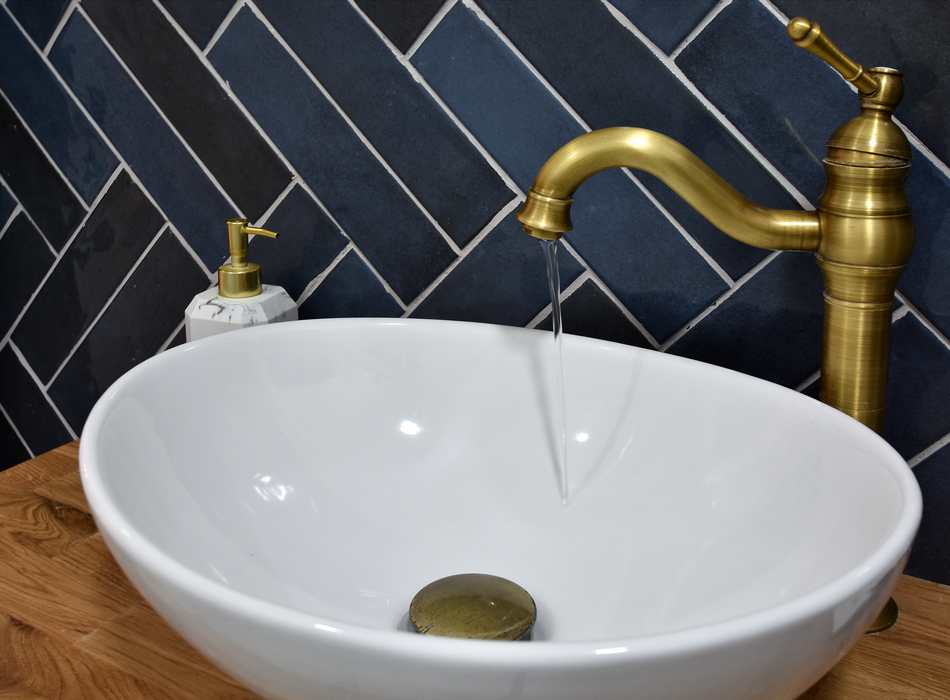
Gurgling Drains
Gurgling noises that continue after flushing stops can signal a clog further down the line or an issue with your venting system. It may sound like someone is pouring water down the drain even if taps, faucets, and toilets are off.
A blockage anywhere along the line prevents air from escaping up and out of the vent pipe, which is normally located on your roof. When it has nowhere else to go, it will often loop back and exit through another drain or up through the toilet instead. You may begin to smell sewage in your bathroom or notice bubbles rising up through the bowl.
What to Try
If you notice this noise, you can try to clear it on your own by:
- Plunging the Toilet. If the issue is a blockage near the toilet, this may be enough to fix the problem.
- Check for Local Issues. In rare cases, issues further down the sewer line or within the municipal water system may trigger this noise. It may be worth contacting your local authority for help.
Important Note: Attempting to clear a severely blocked vent yourself can be dangerous. If you smell a foul, sulfurous, or putrid odor, exit the building and contact a plumber for emergency assistance immediately.
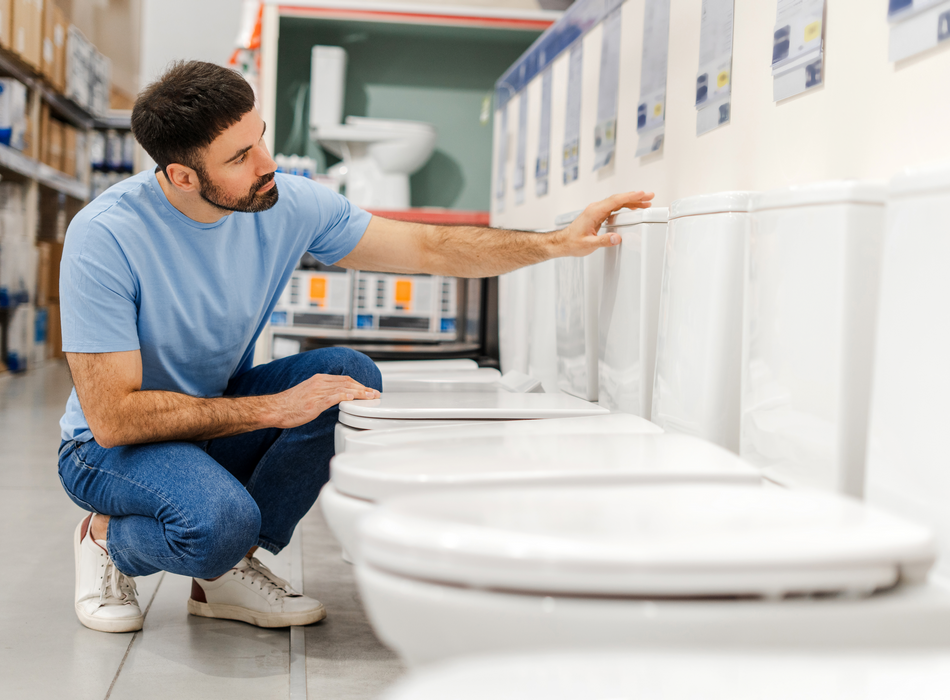
Is Your Low-Flow Toilet to Blame?
In April 2015, the California Energy Commission (CEC) rolled out new water efficiency regulations in response to severe and ongoing drought conditions throughout the state. These updated guidelines included new standards for toilets, faucets, and other fixtures.
The changes included a mandate that all toilets sold in California had to use no more than 1.28 gallons per flush (GPF), far less than the previous standard of 1.6 GPF. Toilets that meet these standards are often referred to as “high-efficiency” or “low-flow.”
From a conservation standpoint, these newer designs help to reduce water consumption and prevent waste. They’ll also lower your water bill! Unfortunately, they can also increase your risk for experiencing noisy flushes, especially if you live in a home with older plumbing.
To lower this risk, you’ll want to perform regular maintenance, like cleaning dirty valves, more frequently. We’re also happy to take a look at any issues you have along the way.
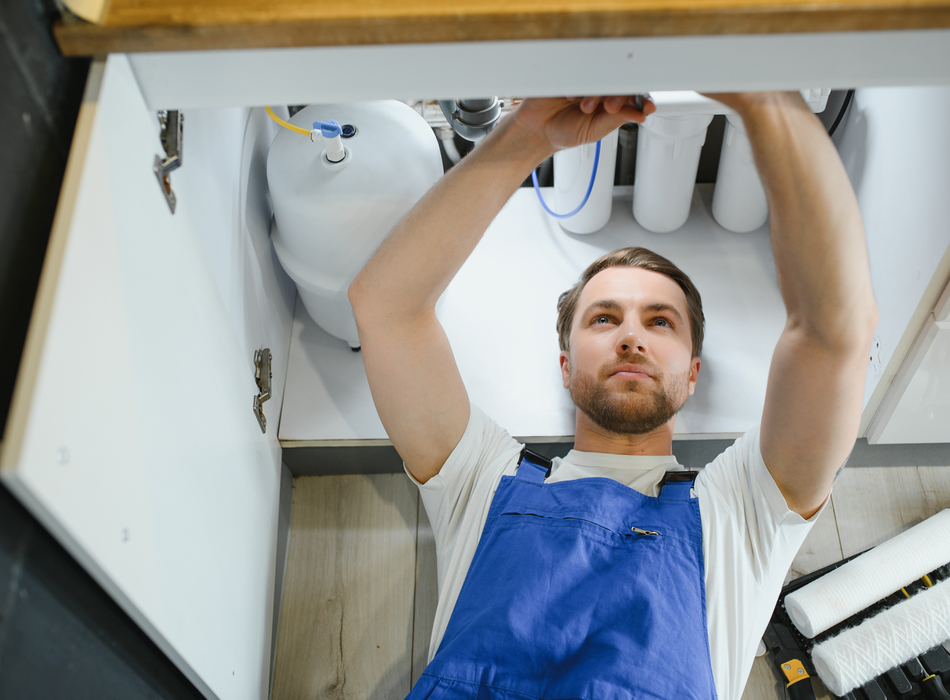
When to Call a Plumber
There’s nothing wrong with investigating a noisy flush on your own. If the problem is minor, such as a broken fill valve, you may even be able to DIY a fix. But call our professionals immediately if you happen to notice any of the following symptoms:
- A bad, sulfurous, or putrid smell (may indicate a sewage leak).
- Noises that are unbearably loud or sound as if they’re coming from behind a wall.
- The presence of visible raw sewage, either indoors or near a septic tank or sewer
- Visible water leaks or severe flooding, especially if it continues with the water off.
Remember: your safety should always come first.
Related: Say Goodbye to Stinky Drains

Caccia Can Help You Eliminate Noisy Flushing
Noisy flushing or knocking pipes disturbing your peace? Our experts take pride in helping Californians in San Mateo and most surrounding areas resolve complex plumbing issues promptly and effectively, often in as little as one service call.
Contact Caccia Plumbing online for friendly, professional service with transparent pricing that fits your needs. Have an emergency? Dial (650) 442-1470 to reach us faster instead.
Frequently Asked Questions about Noisy Toilet Flushing
How can I prevent a noisy toilet in the first place?
Prevention is worth a pound of cure, here! Keep your toilet clean, avoid flushing non-biodegradable materials, and inspect it often for problems. Regular maintenance and best practices for use will lower your risk for disturbances.
My low-flow toilet is so noisy! What can I do?
Less water moving through the system does slightly raise your risk for noisy flushing and other plumbing-related issues. Installing a water hammer arrestor may help. The problem could also be related to another part of your system.
Will Drano and other chemical clog busters reduce toilet noise?
No—and they may even leave you with an even worse problem after the fact! Drano itself isn’t recommended for the toilet period. The heat generated may damage surfaces or even corrode or melt pipes. In general, it’s best to get professional advice before using any product.
What should I do if my toilet bowl is overflowing?
It’s easy to panic when this happens. Stay calm, use the shut-off valve on the intake line to turn the water off. This should stop the overflow temporarily until you can reach out to a plumber. If the water keeps rising, looks brown, or contains sewage, reach out right away.
How can I tell if I have a low-flow toilet?
If you recently bought your home or aren’t sure what type of toilet you have, check the tank and/or the intake valve for a sticker. The gallons-per-flush should be listed on one or both. Anything under 1.28 GPH is typically considered “low flow.”

